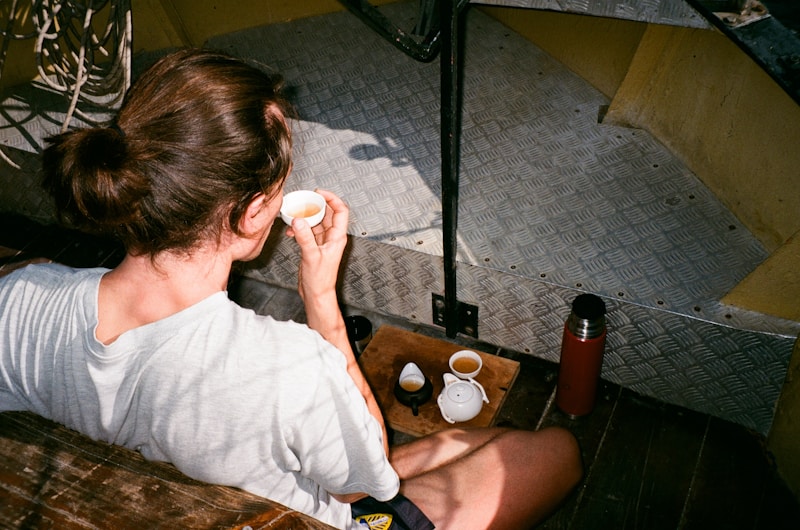Some people love to hate Halloween. It’s an American custom they say, slightly sneeringly, or ‘trick-or-treating was never done in my day’.
Yes, the modern version of trick or treating and dressing up on Halloween came from the States, from Irish immigrants who took the tradition over America.
But the festival of Halloween is in fact one of the most ancient festivals known to man.
Halloween is based on the ancient Celtic tradition of Samhain. At this time of the year, it was believed that the barriers between the physical and spirit world break down, allowing more interaction between humans and spirits.
The Origins of Halloween
In the earliest form of this Celtic pagan ritual, Samhain was one of four quarterly fire festivals, taking place at the midpoint between the Autumn Equinox and the Winter Solstice. It marked the end of the harvest and heralded the dark half of the year.
As the final harvest was being taken in, hearth fires would be left to burn out. Druid priests would then preside over a community fire. There were said to have been sacrifices of cattle. And at the end, those present would re-light their hearth fires with a flame taken from the communal fire.
By the Middle Ages, some of the traditions that we might recognise today had come into practice. Carved turnips called Jack-o-lanterns began to appear, to ward off fairies (not the nice variety) and later Irish communities began to use pumpkins.
Trick-or-treating is said to have originated from ancient Irish and Scottish customs in the nights before Samhain. These customs were called ‘mumming’ when people would dress up, and go from house to house, singing songs to the dead. The serenaded householders would offer cake as payment.
Why Halloween is Important this Year
The year of COVID has been intense. We have had to go into the dark for a while, not knowing when it would end. There has also been the darkness of confusion – about the rules, about who we should see, whether we could go away, whether we could hug.
It’s all very well saying ‘Oh it’s all for the best’ or ‘It’ll all be fine in the end’ – positivity is great. But there’s also value in acknowledging the darkness, the fear, the anxiety, and the actual loss. Sometimes things aren’t all jolly and perfect, and those are times of real learning.
Western society likes to pretend that monsters aren’t real. But actually, they are. And we all have our own monsters too. No one is all good, or all bad. We have moments of cruelty, ignorance, fear, envy, rage. This is part of the human condition.
And most of us can relate to those ancient Celts who lit communal fires to ward off future evils.
Without darkness there would not be light
The pagan fear of darkness still lurks deep within our psyches.
We feel in our bones that this time of year is a turning point. The light changes, the weather changes, the natural world starts to shut up shop. The sadness that summer distracts us from returns. But we need sadness too.
I don’t know if you’ve seen the film Inside Out (a classic) but in the film, the protagonist’s five main emotions have to help her – they are Joy, Sadness, Anger, Fear and Disgust. Joy is the dominant emotion, but she won’t let Sadness take control – she sees her as all negative. But in fact it is Sadness who saves the day, who helps the main character understand what she really values.
When we lose someone we love, it is desperately sad. But it also defines in sharp relief the things we loved about that person. We appreciate them, and everything we shared with them. Often we wish we had appreciated them that way while they were still alive.
It’s hard to talk about loss and sadness, but they are part of our lives. Without the dark, there would be no light.
How to yoga this Halloween
Yoga can be seen as an airy-fairy practice that involves breathing, stretching and new age flimflammery. It can be, if that’s what you need it to be. But yoga is a tool to go deeply into the human condition, and to face ourselves head on.
That’s why it’s so hard.
The term Guru or teacher literally means ‘from darkness to light’. This teacher can be an external teacher, but we also all have that Guru within ourselves.
In order to get to the light, we must first acknowledge the dark.
There are lots of ways that you can do this through yoga.
One of the traditions that used to be linked to this time of year in the Middle Ages was the tradition of the ‘Dumb supper’, when ancestors were invited to join a family meal. Children would play games to entertain the dead, while adults would update the dead on the news of the past year. That night doors and windows were left open for the dead to come in and eat cakes left for them.
You could do this – maybe not all of it. But you could also dedicate a yoga practice to someone you’ve lost. Hold them in mind as you sit quietly before your practice. Observe the emotions that come up to the surface without trying to change them.
The niyama of Santosha (contentment) is also about acceptance. Practice this as you lie in Savasana, letting the exhalation breaths breathe out any holding on that you’ve been doing.
Let’s remember those communal bonfires people, and share our fears and worries, taking home a little flame of hope to see us through the dark times.
Join our Halloween celebration on 31st October 2020 – this event is free but spaces are limited, so secure your space now🎃













